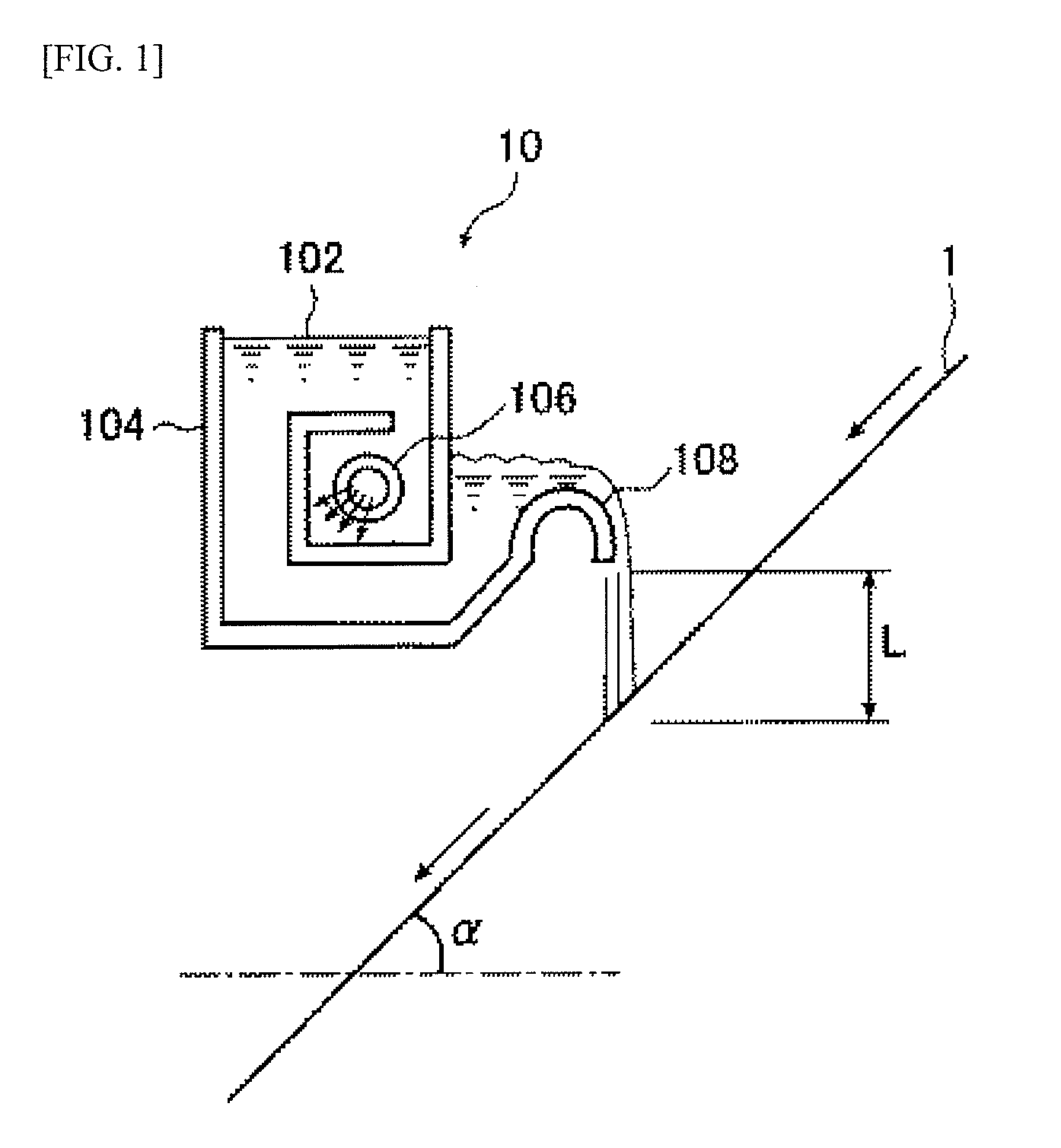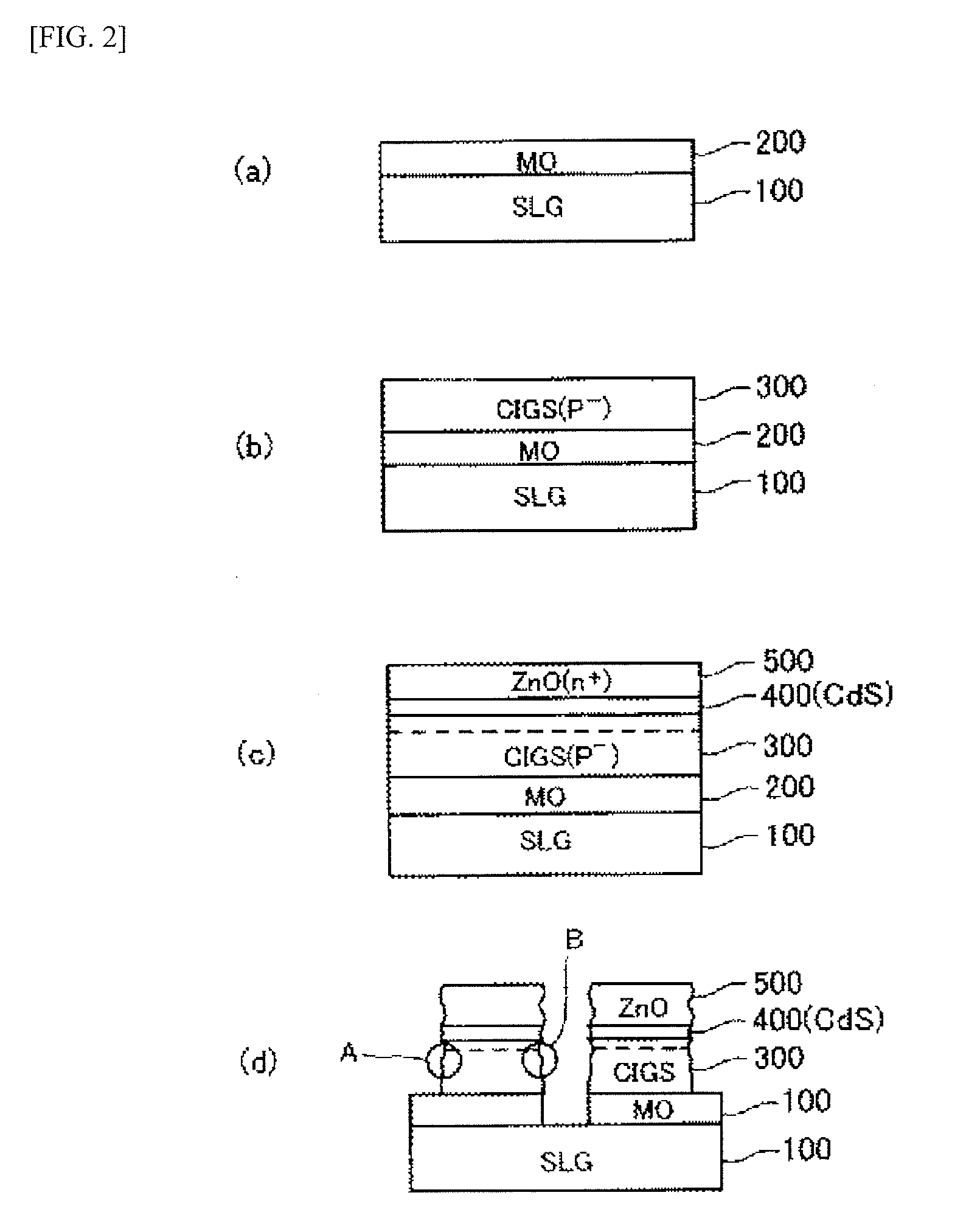Substrate for solar cell and solar cell
a solar cell and substrate technology, applied in the direction of coatings, semiconductor devices, surface reaction electrolytic coatings, etc., can solve the problems of glass substrates that cannot be easily damaged, and lack of flexibility limits the scope of application, so as to achieve good insulating properties and good adhesion , good voltage resistance characteristics
- Summary
- Abstract
- Description
- Claims
- Application Information
AI Technical Summary
Benefits of technology
Problems solved by technology
Method used
Image
Examples
example 1
[0221]The Al alloy substrates shown in Table 6 below were used. Anodic oxide films of varying thicknesses were formed on both sides of the aluminum substrates in an aqueous 0.5 M oxalic acid solution at 16° C. under the anodizing conditions of a voltage of 40 V using a DC power source. The anodic oxide films were then washed with water and dried.
[0222]The substrates were then subjected to pore sealing treatment by dipping them in a solution containing sodium fluoride and phosphoric acid, which had a pH of 4.0 and was heated to 75° C., so that anodized aluminum films of varying sealing ratios were formed.
[0223]The surface areas of the anodic oxide films before and after the pore sealing treatment were measured using a simple BET surface area analyzer (QUANTASORB (trade name) manufactured by Yuasa Ionics Inc.), and the sealing ratios were calculated according to the formula below.
Sealing ratio (%)=[(surface area of anodic oxide film before pore-sealing treatment−surface area of anodic...
example 2
[0235]A CIGS solar cell was formed on each of a glass substrate, a stainless substrate, and an anodized aluminum substrate by a film forming method, and the weights of the resulting solar battery cells per 1 m2 were compared with one another. As the anodized aluminum substrate, the anodized aluminum substrates No. 1 and 7 produced in Example 1 were used. In this example, disc-shaped targets of high-purity copper, indium (99.9999% in purity), high-purity Ga (99.999% in purity), and high-purity Se (99.999% in purity) were used.
[0236]The thicknesses of the glass substrate, the stainless substrate and the anodized aluminum substrate were 2 mm, 0.10 mm and 0.10 mm, respectively. A 0.8 μm thick molybdenum film was deposited on each of these substrates by sputtering. A chromel-alumel thermocouple was used as a substrate temperature monitor.
[0237]First, the main vacuum chamber was evacuated to 10−6 Torr, and then high-purity argon gas (99.999%) was introduced into the sputtering chamber, an...
example 3
[0242]In this example, a chalcopyrite structure CuInGaSe2 thin film was formed as a CIGS thin film. In this example, an anodized aluminum substrate, a stainless substrate, and a soda-lime glass substrate were each used, on which films were formed under the same conditions as those in Example 2 to form solar cells. As the anodized aluminum substrate, the anodized aluminum substrate No. 6, 9 and 12 produced in Example 1 were used.
[0243]The characteristics of each resulting solar cell were measured, while it was irradiated with simulated sunlight at an AM of 1.5 and 100 mW / cm2. As a result, the solar cells produced with the anodized aluminum substrate Nos. 6, 9 and 12, respectively, had conversion efficiencies of 14%, 7%, and 5%, respectively. The solar cells produced with the soda-lime glass substrate and the stainless substrate, respectively, had photoelectric conversion efficiencies of 13% and 5%, respectively.
[0244]It is considered that the solar cell produced with the anodized alu...
PUM
| Property | Measurement | Unit |
|---|---|---|
| Fraction | aaaaa | aaaaa |
| Thickness | aaaaa | aaaaa |
| Thickness | aaaaa | aaaaa |
Abstract
Description
Claims
Application Information
 Login to View More
Login to View More - R&D
- Intellectual Property
- Life Sciences
- Materials
- Tech Scout
- Unparalleled Data Quality
- Higher Quality Content
- 60% Fewer Hallucinations
Browse by: Latest US Patents, China's latest patents, Technical Efficacy Thesaurus, Application Domain, Technology Topic, Popular Technical Reports.
© 2025 PatSnap. All rights reserved.Legal|Privacy policy|Modern Slavery Act Transparency Statement|Sitemap|About US| Contact US: help@patsnap.com



